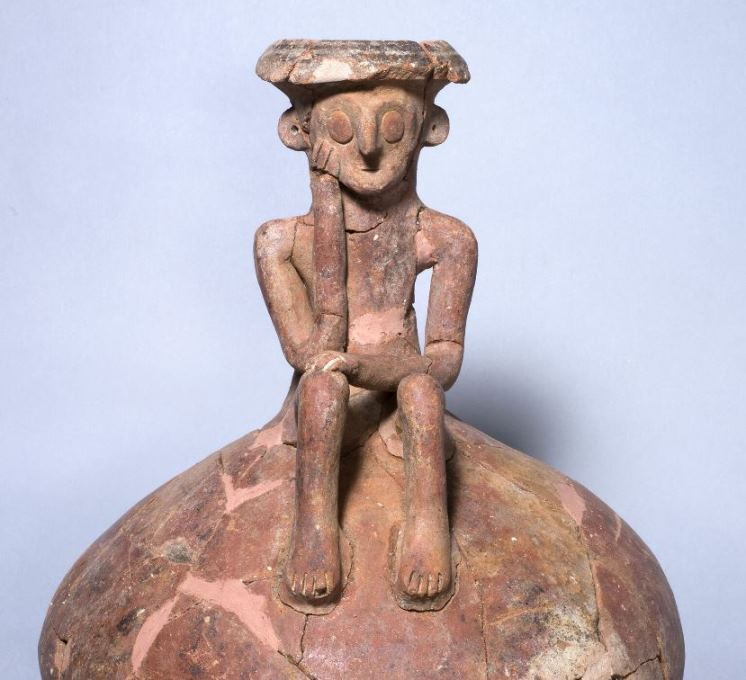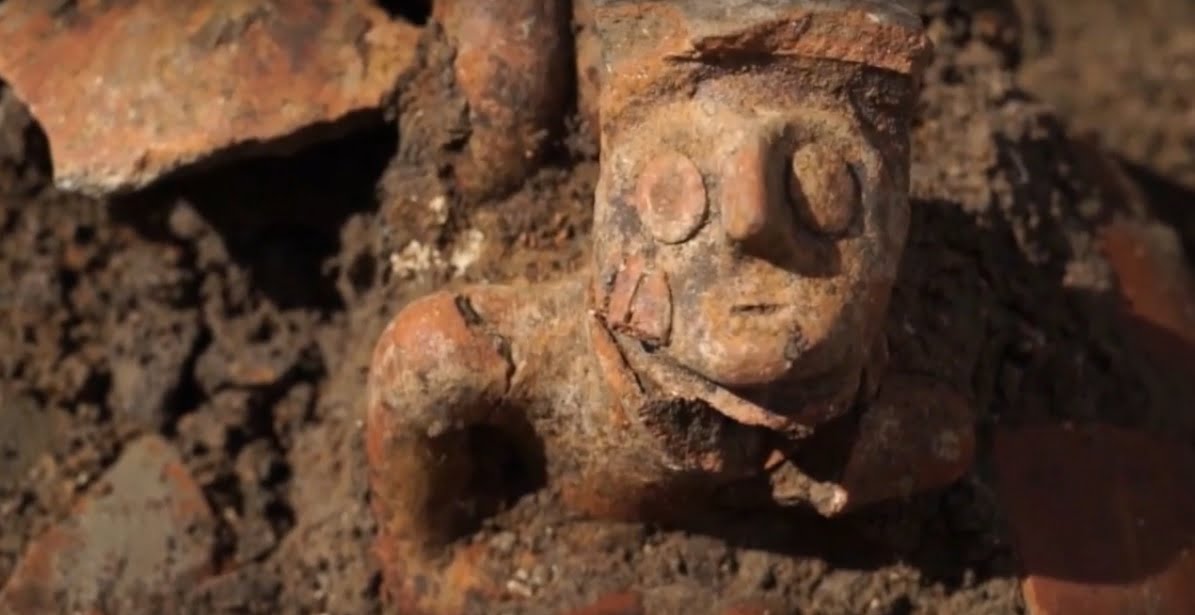This article was first published by The Times of Israel and was re-posted with permission.
He sits pensively, his hand on his chin, like a Middle Bronze Age predecessor to Rodin’s famous sculpture “The Thinker.” His eyes stare blankly as he sits atop a pot that was shattered sometime after it was buried some 3,800 years ago.
The unique clay statuette, mounted atop a ceramic vessel, was found in the central Israel town of Yehud by a team of Israel Antiquities Authority archaeologists, who paired up with high school students in October. News of the discovery was reported by the IAA on Wednesday.
SEE ALSO: Living It Up In Downtown Tel Aviv: 5,000-Year-Old Egyptian Beer Mugs Discovered In Israel
Gilad Itach, the archaeologist heading the dig, said that on the last day of excavations, just before construction of a building commenced on site, they found the 18-centimeter (seven-inch) tall figurine, along with an assortment of other items.
“It seems they first prepared a pot characteristic of the period, and afterwards they added the unique statue, the likes of which have never before been discovered in previous research,” he said. “The level of precision and attention to detail in creating this almost 4,000-year-old sculpture is extremely impressive. The neck of the jug served as a base for forming the upper portion of the figure, after which the arms, legs and a face were added to the sculpture.”
SEE ALSO: 12,000-Year-Old Village Discovered Near The Sea Of Galilee
Sign up for our free weekly newsletter
SubscribeArchaeologists also found other vessels, daggers and arrowheads, as well as the bones of sheep and what may be butt bones. Itach suggested the items were funerary objects for a prominent member of the Canaanite community.
“It was customary in antiquity to believe that the objects that were interred alongside the individual continued with him into the next world,” he said in a statement. “To the best of my knowledge such a rich funerary assemblage that also includes such a unique pottery vessel has never before been discovered in the country.”
“One can see that the face of the figure seems to be resting on its hand as if in a state of reflection,” Itach added, “It is unclear if the figure was made by the potter who prepared the jug or by another craftsman.”
To read the full article, click here.
Photos: Andrew Horne, Israel Antiquities Authority/Clara Amit
Related posts

Resilient And Nutritious New Plant-Based Milk Aims To Make A Splash

Chocolate From Cultivated Cocoa Comes Without Environmental Toll

Plastic Fantastic: Startup Takes PVC Back To Its Crude Oil Roots






Facebook comments